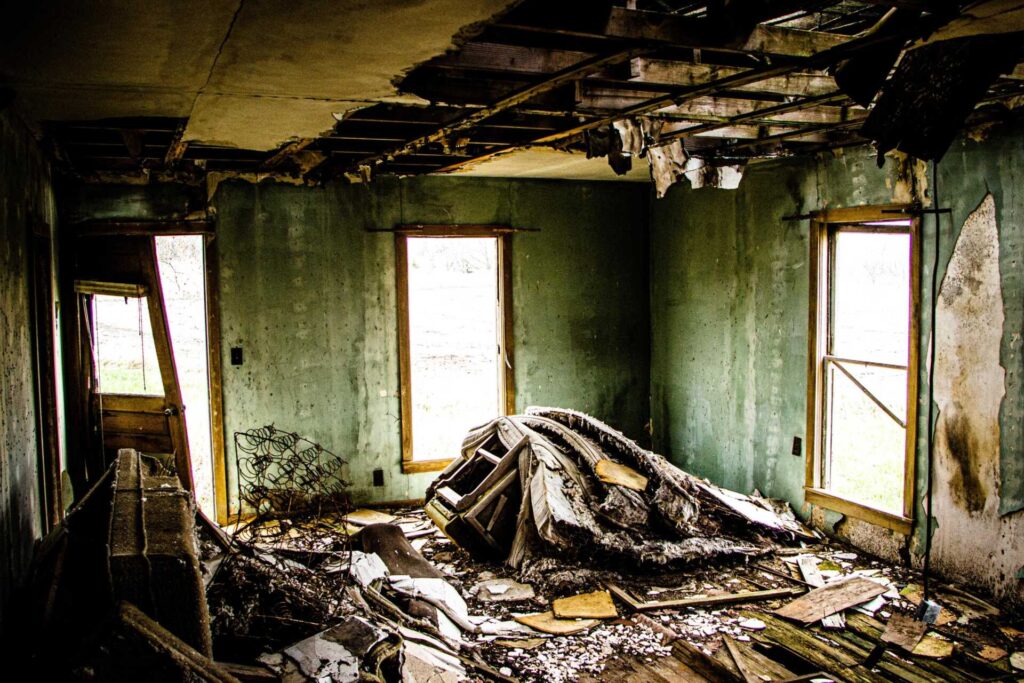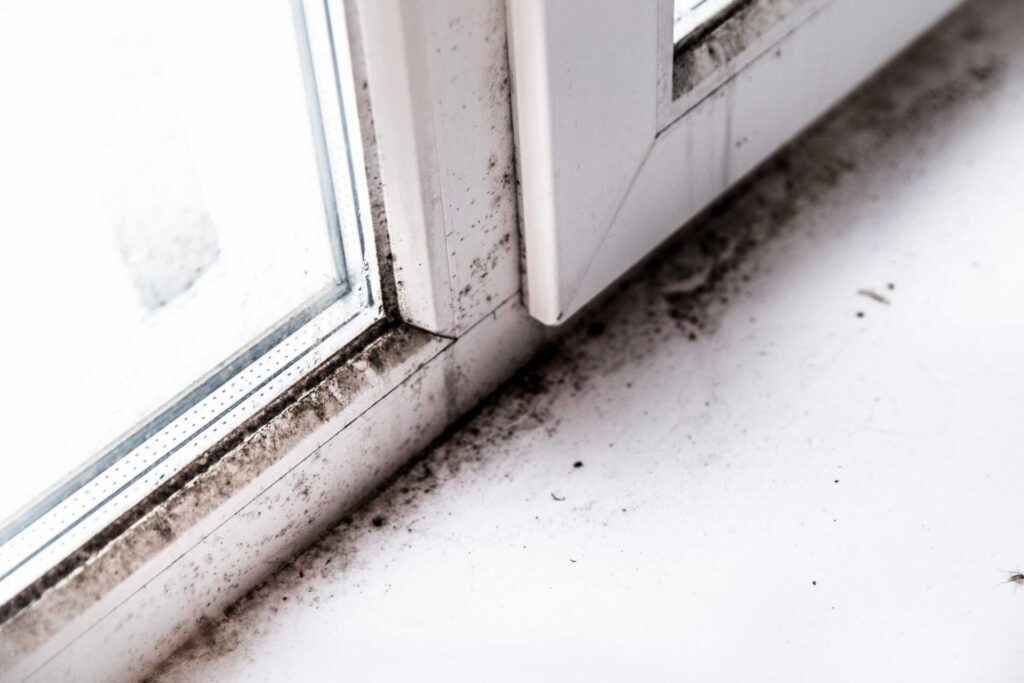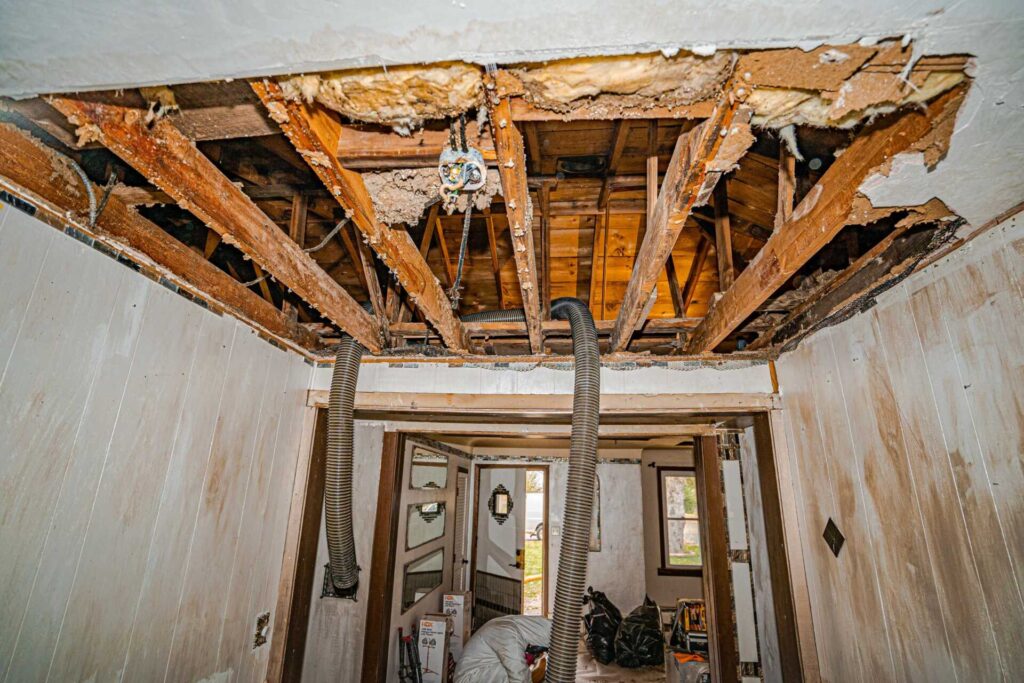
Contents
When facing fire or water damage, knowing how to approach water restoration is vital. Start by evaluating the damage thoroughly and ensuring your safety. You’ll need to act quickly to prevent further issues, such as mold growth. This process involves specific techniques and precautions. What follows next can greatly impact the restoration outcome and your peace of mind. Understanding these steps is essential for effective recovery.
Key Takeaways
- Conduct a thorough damage assessment to identify structural issues and document findings for insurance claims.
- Prioritize safety by wearing PPE and removing standing water to prevent further damage and mold growth.
- Identify and treat mold promptly by monitoring damp areas and odors, while containing affected zones.
- Categorize belongings into salvageable, questionable, and non-salvageable groups, seeking professional help for valuable items.
- Review insurance policies carefully, document all damage, and maintain open communication with your insurance agent throughout the claims process.
Assessing the Damage: The First Step in Restoration
When a fire or flood strikes, evaluating the damage is essential for effective restoration. Start by thoroughly inspecting the affected areas. Look for structural damage, such as weakened beams or compromised walls. Assess water saturation in materials like drywall, carpets, and insulation, as prolonged exposure can lead to mold growth.
Document everything—take photos and notes—this will help during insurance claims and guide your restoration process.
Check for hazardous materials, especially after a fire; smoke and soot can pose health risks. Identify damaged electrical systems or plumbing issues, and note any appliances that require replacement. Prioritize your findings based on safety and the extent of damage.
Once you’ve completed your assessment, create a detailed plan addressing immediate needs versus long-term repairs. This organized approach not only streamlines the restoration process but also guarantees you’re addressing the most critical issues first, fostering a sense of community and support during recovery.
Safety Precautions to Take Before Starting Restoration
Before starting any restoration work, it’s essential to assess for hazardous materials like asbestos or mold, which can pose serious health risks.
Equip yourself with the appropriate personal protective equipment (PPE), including gloves, masks, and goggles, to safeguard against exposure.
Taking these precautions will guarantee a safer working environment as you begin the restoration process.
Assess Hazardous Materials
Evaluating hazardous materials is a critical step in the restoration process, as exposure can pose serious health risks.
Before you begin, you need to identify potential dangers in your environment. Here’s what to look for:
- Asbestos – Often found in older buildings, it’s a silent threat that can cause severe lung issues.
- Lead Paint – If the property was built before 1978, you could be at risk for lead exposure.
- Mold – A common aftermath of water damage, it can trigger allergies and respiratory problems.
- Chemicals – Household cleaners and other substances may leak or become dangerous when mixed.
Taking these precautions guarantees not only your safety but also a successful restoration.
You’re not just restoring a space; you’re safeguarding lives.
Personal Protective Equipment
To guarantee your safety during the restoration process, wearing the right personal protective equipment (PPE) is vital. Proper PPE minimizes exposure to hazardous materials and guarantees you’re well-protected. Here’s a quick guide to the important gear you should wear:
| PPE Item | Purpose | Example |
|---|---|---|
| Safety Goggles | Protects eyes from debris | ANSI Z87.1 compliant goggles |
| Respirator | Filters airborne contaminants | N95 or P100 respirator |
| Gloves | Shields hands from chemicals | Nitrile or rubber gloves |
| Hard Hat | Protects head from falling objects | ANSI-compliant hard hats |
Emergency Water Removal Techniques
When faced with a sudden water intrusion, swift action is essential to minimize damage and prevent mold growth. You need to implement effective emergency water removal techniques immediately.
Here are four critical steps to follow:
- Shut off the water source – Quickly locate and stop the flow to reduce further damage.
- Remove standing water – Use a wet/dry vacuum or a sump pump to extract any visible water.
- Remove absorbent materials – Take out carpets, rugs, and furniture that can retain moisture and promote mold.
- Assess and document damage – Take photos and notes for insurance purposes; this will help you in the restoration process.
Drying Out Your Property Effectively
Once you’ve removed standing water, it’s vital to dry out your property effectively to prevent further damage and mold growth.
Start by opening windows and doors to increase airflow. Use fans and dehumidifiers to expedite the drying process—position fans to create cross-ventilation and place dehumidifiers in the most affected areas.
Check your HVAC system; running it can help circulate air and remove moisture.
Inspect all surfaces, including walls, floors, and furniture, and use towels or mops to soak up residual moisture.
Don’t forget about hidden areas like behind appliances and in closets, where moisture can linger. If you have carpets, consider professional cleaning or replacement if they’ve absorbed too much water.
Monitoring humidity levels is vital; aim for a relative humidity below 60%.
Identifying and Treating Mold Issues
Mold can quickly become a significant problem following water damage, so identifying and treating it promptly is essential. To protect your home and health, keep an eye out for these signs of mold growth:
- Visible Growth: Look for dark spots, especially in damp areas.
- Musty Odor: A persistent, musty smell indicates mold presence.
- Increased Allergies: Unexplained allergic reactions can signal hidden mold.
- Water Stains: Discoloration on walls or ceilings often points to moisture issues.
If you detect mold, act fast. Start by containing the affected area to prevent spread.
Use protective gear like gloves and masks, and clean small patches with a mixture of water and detergent. For larger infestations, consider hiring a professional.
Fire Damage Cleanup: What You Need to Know
After a fire, the cleanup process can be overwhelming, but addressing fire damage swiftly is essential for restoring your home and ensuring safety.
Begin by evaluating the damage; wear protective gear, including gloves and masks, to shield yourself from hazardous materials. Remove any debris and charred items, as they can pose health risks and harbor harmful chemicals.
Next, ventilate the area by opening windows and using fans to dissipate smoke odors. Clean surfaces with specialized cleaning agents designed for fire damage, as standard cleaners may not suffice. Pay particular attention to soot, which can permeate walls and furniture.
Inspect your electrical and plumbing systems for damage, and contact professionals if necessary.
Don’t forget to document the damage for insurance claims, as this will help facilitate your recovery process. By taking these steps, you’ll create a safer environment and start the journey toward restoring your home.
Salvaging and Restoring Damaged Belongings
Following fire damage cleanup, salvaging and restoring your belongings becomes a priority.
You’ll want to take immediate action to minimize further damage and preserve what matters most. Start by evaluating the affected items. Here are four key steps to guide you:
- Document Everything: Take photos of damaged items for insurance claims.
- Separate and Assess: Categorize items into salvageable, questionable, and non-salvageable.
- Clean Professionally: Seek professional help for restoration, especially for valuable or sentimental items.
- Store Safely: Keep restored items in a dry, safe space to prevent further damage.
Acting promptly can make a significant difference in the restoration of your cherished belongings.
Remember, while some items may seem beyond repair, many can be salvaged with the right approach.
Don’t lose hope; your belongings still hold value and memories worth preserving.
Repairing Structural Damage After Fire and Water Incidents
After a fire or water incident, you’ll need to assess the extent of the damage to your structure.
Choosing the right repair materials is vital for restoring both appearance and safety.
It’s important to guarantee structural integrity throughout the repair process to prevent future issues.
Assessing Damage Extent
How can you effectively gauge the extent of damage after a fire or water incident?
Start by conducting a thorough inspection. Look for signs of structural compromise, as this can affect your safety and repair decisions.
Here’s a simple checklist to guide you:
- Check for visible charring or discoloration: This indicates fire damage and potential weakening.
- Inspect walls and ceilings for warping or sagging: Water damage can lead to structural failures.
- Assess flooring for signs of buckling or stains: These can reveal underlying issues.
- Evaluate the foundation for cracks or shifts: A compromised foundation can pose serious risks.
Taking these steps helps you understand the damage’s severity, allowing you to take informed action.
Your safety and peace of mind depend on it.
Choosing Repair Materials
When selecting repair materials for structural damage caused by fire and water, it’s crucial to prioritize durability and compatibility with your building’s existing structure.
Choose fire-resistant materials for areas exposed to heat, like steel or treated wood. For water-damaged sections, consider moisture-resistant products such as fiberglass or specially treated drywall.
Pay attention to insulation; opt for closed-cell foam or similar materials that resist mold growth.
It’s also important to match the aesthetics of your repair materials with your building’s design. Checking for warranties and certifications can guarantee quality and longevity.
Collaborating with a restoration professional can help you make informed choices, fostering a sense of community and belonging as you restore your space together.
Ensuring Structural Integrity
Guaranteeing structural integrity is essential for the safety and longevity of your building following fire and water incidents.
You need to assess the damage thoroughly and take immediate action to prevent further issues.
Here are four critical steps to follow:
- Inspect Load-Bearing Elements: Check beams and columns for any signs of damage.
- Evaluate Foundation Stability: Verify the foundation remains intact and secure.
- Address Mold Issues: Remove any water-damaged materials to prevent mold growth.
- Engage Professionals: Hire certified restoration experts for a thorough evaluation.
Working With Insurance for Restoration Claims
Maneuvering through the insurance process for restoration claims can be intimidating, especially after experiencing the stress of fire or water damage.
To start, review your policy carefully; understand your coverage limits and any exclusions. Document every aspect of the damage with photos and detailed notes. This evidence will support your claim and guarantee you receive a fair settlement.
Contact your insurance agent promptly to report the damage and initiate the claims process. Keep records of all communications, including dates and names of representatives.
Be prepared to answer questions about the incident and provide estimates from restoration professionals.
If your claim is denied or you feel the payout is insufficient, don’t hesitate to appeal. Sometimes, hiring a public adjuster can be beneficial, as they advocate on your behalf.
Preventative Measures to Avoid Future Damage
To avoid future damage, you should conduct regular maintenance checks on your home’s systems, including plumbing and electrical components.
Installing water alarms can provide an early warning for leaks, helping you mitigate potential water damage.
Taking these proactive steps can greatly reduce the risk of costly repairs down the line.
Regular Maintenance Checks
While it’s easy to overlook maintenance tasks, regular checks of your property can greatly reduce the risk of future fire and water damage.
By staying proactive, you guarantee the safety of your home and loved ones.
Here are four essential maintenance tasks to prioritize:
- Inspect Electrical Systems: Check for frayed wires and malfunctioning outlets.
- Clear Gutters and Drains: Remove debris to prevent flooding and water damage.
- Test Smoke and Carbon Monoxide Detectors: Verify they’re functioning properly to protect against fire hazards.
- Seal Windows and Doors: Prevent water intrusion and energy loss by sealing gaps.
Install Water Alarms
Installing water alarms is an essential step in safeguarding your home against potential water damage. These devices detect leaks and moisture, alerting you before problems escalate.
Place alarms in high-risk areas such as basements, near water heaters, and under sinks. Choose models with features like smartphone notifications for real-time updates, ensuring you’re informed even when you’re away.
Additionally, test your alarms monthly and replace batteries as needed to maintain functionality.
By incorporating water alarms into your home safety strategy, you’re not just protecting your property; you’re fostering a sense of belonging in a safe environment.
Final Thoughts
In the aftermath of fire and water damage, steering through the restoration process can feel intimidating. However, by following these ten essential tips, you can transform a challenging situation into a manageable one. With careful assessment, prompt action, and effective communication, you’ll not only restore your property but also safeguard it against future mishaps. Embrace these strategies to turn adversity into an opportunity for renewal, ensuring your home remains a safe haven for years to come.

